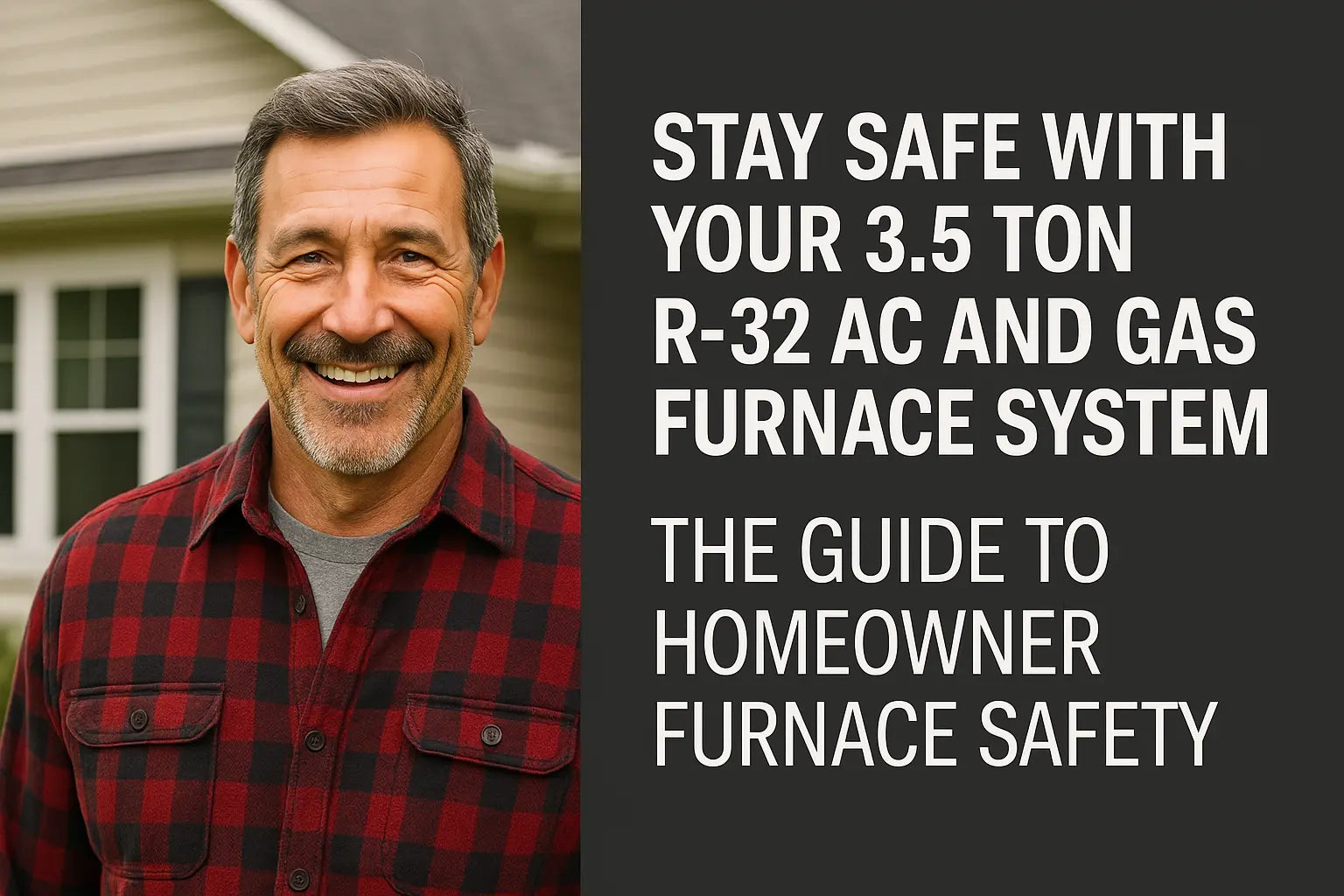Mike Here—Let’s Keep Your System Safe, Not Scary
Hey folks, Mike Sanders here. Now look, I’m not here to make you scared of your gas furnace—but I am here to make sure you respect it. These things run hot, use real gas, and if you don’t stay on top of maintenance and basic safety checks, you could end up with more than just cold toes.
If you’ve got yourself a solid 3.5 Ton R-32 AC and gas furnace combo (like the kind over at The Furnace Outlet), then you’re already ahead of the game when it comes to energy efficiency. But safety doesn’t take care of itself. Let’s dig into what you need to know so your comfort system keeps your home cozy—without any surprises. 🔧🔥🏠
Why Gas Furnace Safety Matters
Gas furnaces are efficient and reliable, but they burn fuel to produce heat—and that comes with certain risks:
-
Carbon monoxide (CO) leaks
-
Gas leaks
-
Combustion chamber cracks
-
Improper ventilation or flue blockages
-
Fire hazards from nearby materials or electrical faults
According to the CDC, over 400 people die from carbon monoxide poisoning every year in the U.S., and thousands are hospitalized. Most of those cases are preventable with simple checks and awareness.
When paired with an R-32 AC system, the furnace becomes part of a bigger HVAC ecosystem. Good airflow, duct sealing, and temperature controls all play a part in making sure the system runs safely and efficiently.
Tip #1: Install and Maintain Carbon Monoxide Detectors
This is non-negotiable. Every home with a gas furnace should have a working carbon monoxide detector.
-
Place detectors on every level of the home, especially near bedrooms.
-
Test them monthly and replace batteries twice a year.
-
Replace the entire unit every 5–7 years depending on manufacturer recommendations.
The National Fire Protection Association (NFPA) has a great overview of how many CO detectors you need and where to place them.
If a detector goes off: open windows, shut down the furnace, and leave the house immediately. Then call emergency services and your gas utility.
Tip #2: Schedule Annual Furnace Inspections
Even if you’re handy, there are some things only a pro can spot—like tiny cracks in the heat exchanger or low-level gas leaks.
-
Schedule a licensed HVAC technician to inspect your system every year before heating season kicks in.
-
Make sure they check gas pressure, burners, flame sensor, heat exchanger, flue pipe, and safety controls.
-
Ask them to verify that your R-32 AC unit is properly integrated with your furnace for safe, balanced airflow.
Not sure what to expect? Angi offers a helpful breakdown of what a full inspection usually includes.
Tip #3: Keep the Furnace Area Clean and Clear
Gas furnaces need breathing room—don’t let clutter creep up around them.
-
Keep at least three feet of clearance around the furnace.
-
Store paint, paper, rags, and flammable items elsewhere.
-
Make sure the furnace has proper airflow and isn't boxed in by furniture or boxes.
This seems like small stuff, but blocked airflow or flammable junk near the furnace is a recipe for disaster. You’d be surprised how often fires start from something leaning too close.
Tip #4: Check Your Vents, Chimneys, and Flues
A big part of furnace safety is proper venting. If combustion gases can’t get out, they’re staying in—which is exactly what you don’t want.
-
Inspect outside vents and flue pipes regularly. Remove leaves, snow, or nests.
-
Listen for backdrafting—if you smell exhaust inside, shut it down and call a pro.
-
Make sure all vent pipes are securely attached and angled correctly.
The folks at Energy.gov offer some solid advice on furnace venting, and how it connects to overall energy performance too.
Tip #5: Know the Signs of Trouble
Sometimes your furnace is trying to tell you something—don’t ignore the signs.
Watch out for:
-
Rotten egg smell (that’s gas—evacuate immediately)
-
Soot or scorch marks near the furnace
-
Flickering or yellow flames (should be steady and blue)
-
Weird noises—banging, whistling, or booming
-
Furnace turning on and off rapidly (short cycling)
If any of these sound familiar, turn the system off and call in a licensed technician. Trying to fix gas line or combustion problems yourself is just asking for trouble.
Tip #6: Upgrade Smart (or Safe)
If your furnace is over 15–20 years old, even if it seems to be working fine, it might be time for an upgrade.
-
Older furnaces are less efficient and lack modern safety features like auto-shutoffs and sealed combustion chambers.
-
New models paired with R-32 systems are more energy-efficient and safer than ever.
-
Look for systems with built-in diagnostics and compatibility with smart thermostats.
If you’re browsing, the folks at Consumer Reports offer a fantastic furnace buying guide with safety and efficiency breakdowns.
And if you’re ready to shop or compare full systems, check out the R-32 3.5 Ton AC and Gas Furnace bundles over at The Furnace Outlet. They’ve got models with the safety, performance, and eco-focus that today’s homes need.
Mike’s Final Thoughts
Alright folks, gas furnace safety doesn’t have to be scary—but it does have to be taken seriously. When you stay on top of inspections, keep things clear, and pay attention to those little warning signs, you’re protecting your home and your family.
I’ve said it before and I’ll say it again: your furnace is a workhorse, but it’s not invincible. Treat it with care, and it’ll take care of you when those cold snaps roll in.
If you’re starting fresh or replacing an older unit, the 3.5 Ton R-32 AC and Gas Furnace systems are solid options. Reliable, efficient, and ready to roll with today’s safety standards.
Curious about seasonal maintenance for your 3.5-ton R-32 AC and gas furnace systems? Visit my guide: The Homeowner Checklist.
Stay warm, stay sharp, and give your furnace the respect it deserves.
Mike out! 🔥🧰💪







